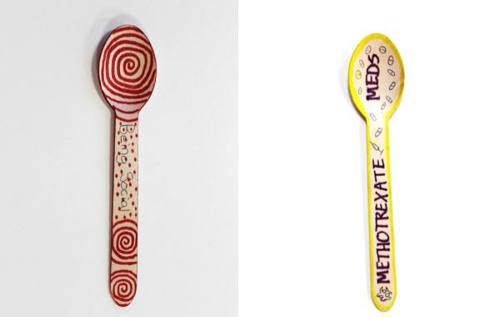What is Spoon Theory and how can it be helpful for people with arthritis?
01 February 2024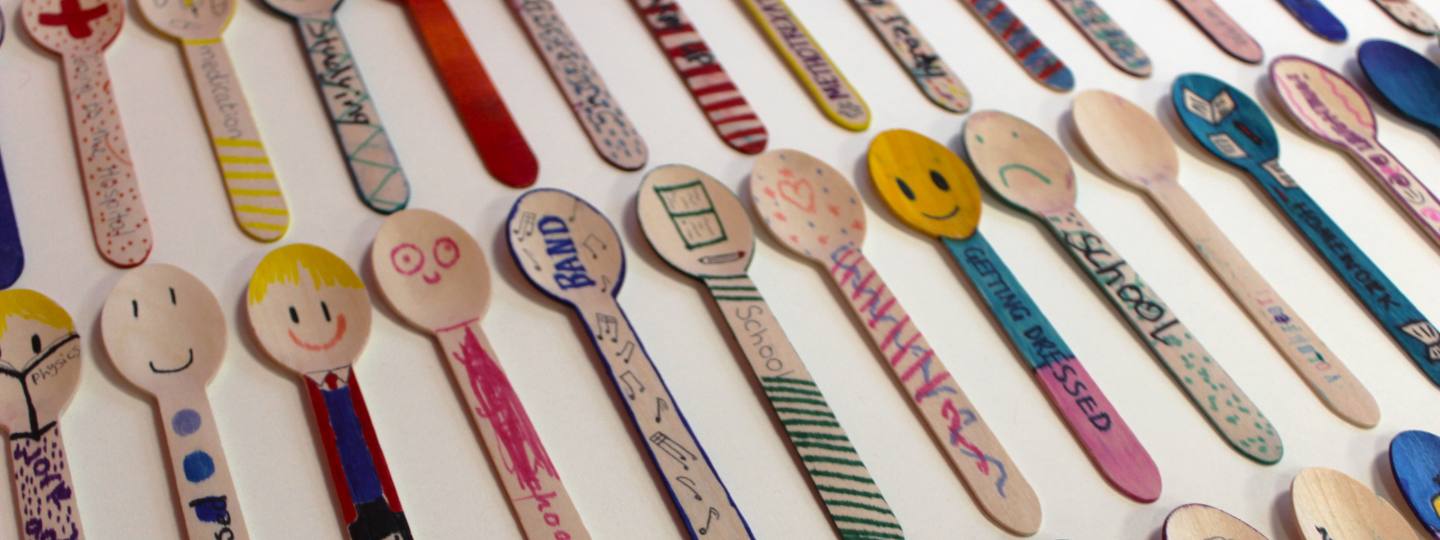
We know that, for many people with arthritis, no two days are the same. Your pain and energy levels might change from one day to another, and it can be challenging when you’re trying to make plans.
To help explain how their pain and energy levels vary every day, some people may use an analogy called Spoon Theory.
Here Clare Hyatt, our Young People and Families Artistic Lead, explains Spoon Theory.
She also tells us about Joint Creativity. This is an art project for young people living with arthritis, which is inviting young people to decorate spoons as part of an upcoming art exhibit.
What is an ‘invisible’ condition?
Some people living with arthritis describe it as living with an ‘invisible’ condition or disability.
Because at first glance, people may not be able to tell that you’re dealing with pain, stiffness, or fatigue.
“For a young person living with these conditions, even when their symptoms are more visible (for example, if they’re hobbling), people may falsely assume they've had a fall rather than they're living with a chronic condition," says Clare.
“It would be a lot easier if people knew how [my symptoms] fluctuate so much. One day I can cope, then the next thing I might not be able to use my wrist, or I struggle to walk.”
What is Spoon Theory?
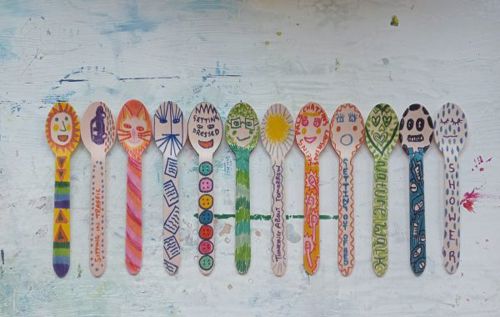
We know it can be frustrating trying to explain your pain and fatigue to others. So, to help, you could use the idea of ‘spoons’.
Created by Christine Miserandino, the Spoon Theory is a visual way to explain how much energy you have throughout the day, and how it might be limited by pain and fatigue.
Imagine you have 12 spoons in your hand, each representing a unit of energy.
Every time you need to do a task (whether it’s cooking, studying, or socialising) you need to ‘spend’ one of your spoons – and once they’re gone, they’re gone.
Just how many spoons does it take to perform a task? It depends on the person, the day, and your condition. If you live with arthritis, you might have 12 spoons, but it might take more spoons (energy) to do day-to-day tasks. Plus, you might need to spend even more spoons (energy) when you’re having a flare-up. This means, if you aren’t careful, your spoons might run out.
“The great thing about Spoon Theory is that it helps to visualise pain and fatigue,” explains Clare.
“The idea is that each spoon represents a unit of energy and that these are spent as needed on things like getting dressed, taking medicines, studying, chatting with friends and taking part in hobbies."
“By communicating our lived experiences like this, we can help reduce the isolation that often comes with these conditions and get the emotional and social support we need from our family and friends.”
What is Joint Creativity?
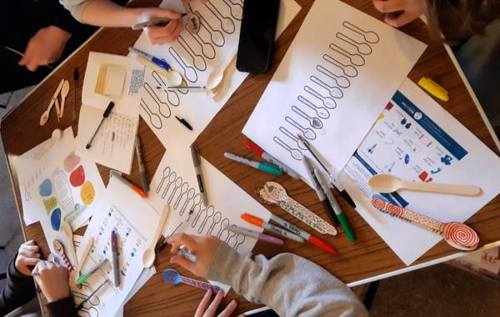 Joint Creativity hosts art workshops and residential art camps in Scotland.
Joint Creativity hosts art workshops and residential art camps in Scotland.
They really matter because they give young people living with musculoskeletal conditions the chance to get together, create, and connect.
“Creativity has been so powerful for me personally when navigating life with arthritis,” says Clare. “I was diagnosed with JIA (juvenile idiopathic arthritis) when I was four and discovered art as a self-management tool when I was about 16.
"Art can be relaxing and cathartic, but more than that, it's a powerful tool for self-expression, exploring identity, and communicating experiences of a fluctuating condition.”
After the workshops, all the art is then curated into a public exhibition. This year, the art exhibit will be at Project Ability in Glasgow from the 16 March - 20 April.
Learn more about how we support young peopleSee the art exhibit
- See the spoons in person at our upcoming public exhibition at Project Ability, 103 Trongate, Glasgow, G1 5HD
- Opening hours: 11am-5pm, 16 March-20 April (Wednesdays-Saturdays, closed Easter Friday)
What is the Spoon Project?

At a recent Joint Creativity Art Camp, young people created 76 spoons, decorating them in vibrant patterns and splashes of colour.
This sparked the idea of the Spoon Project, an art project all about Spoon Theory, exploring energy use and pacing, and being creative.
To celebrate Joint Creativity’s 10th anniversary, we invited young people across England, Wales, and Northern Ireland to join the arty fun.
We posted kits of spoons to young people, and some were also offered in clinics across the UK. All their decorated spoons will be publicly shown at our exhibition in Glasgow from the 16 March – 20 April.
“With this project we are creating a collaborative art installation at our upcoming exhibition in Glasgow, bringing together young people from across the UK and empowering them to communicate experiences of living with invisible conditions,” says Clare.
“We’re hoping to spread the message that young people get arthritis too and to never assume anything just because someone appears to look ‘healthy’”.
Read more stories about young people
Eva's story
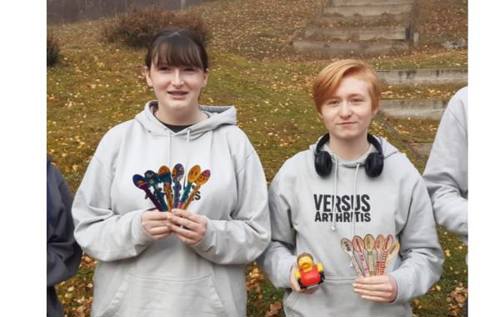
Eva, 16, lives with Chronic Pain Syndrome and a Hypermobility Spectrum Disorder.
“I have a lot of pain in my joints and muscles, fatigue and my joints pop out of place sometimes,” she explains. “Because I find going up and down stairs very difficult, I use the lift at my school!”
She says the Spoon Theory is “helpful because it’s such a simple and understandable way to explain the way I feel in a day.”
“We have different starting points when it comes to energy and pain,” she says. “Each task you do in a day is worth a certain number of spoons, but for me, those activities use more spoons. For example, while getting dressed my friend may use one spoon while I use three”
To help manage her pain and energy levels, Eva says “I use heat patches... and take lots of breaks! I also love an after-school nap before starting on my homework.”
Through Versus Arthritis events, she’s also made "lots of friends who understand what it's like to have a chronic health condition.”
Eva's also decorated several spoons for the upcoming art project. "My designs are all things that I find difficult or tiring, such as getting out of bed, showering and doing schoolwork," she says.
